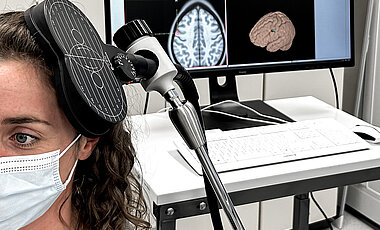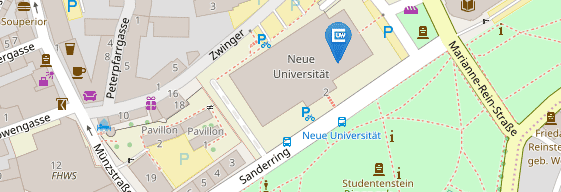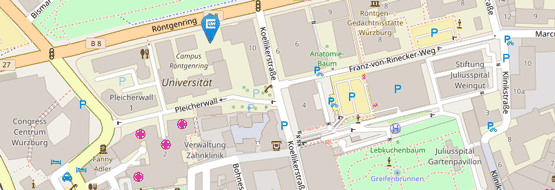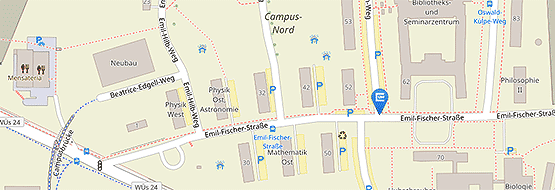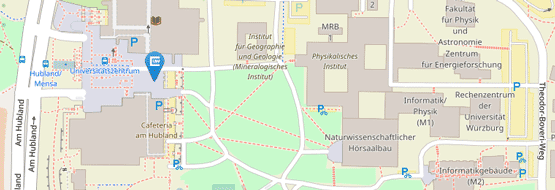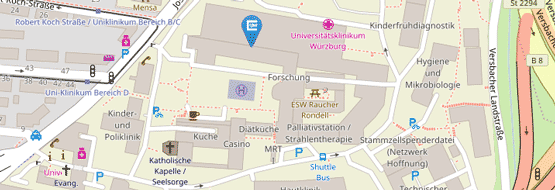Successfully Overcoming Fear of Spiders
09/23/2025A study by Würzburg University Medicine shows promising initial results in overcoming arachnophobia. Further participants are welcome.
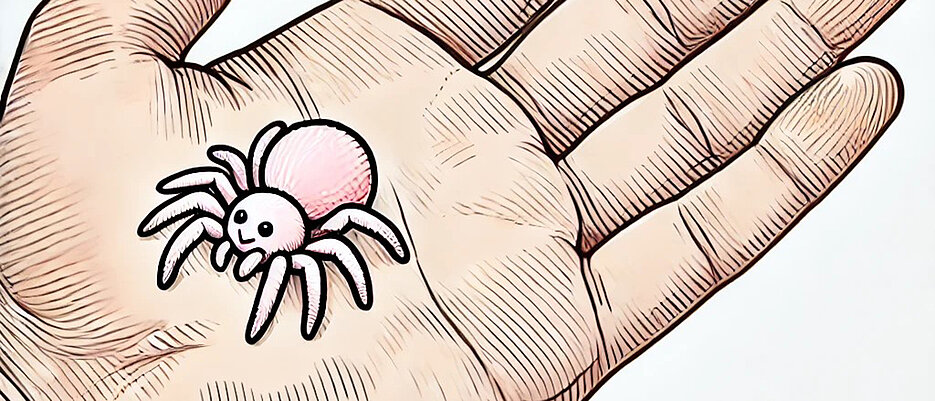
Spiders are particularly active and highly visible in autumn. At this time, many species are fully grown, looking for mates and building larger webs to catch as much food as possible. At the same time, they seek shelter indoors as temperatures drop.
For most people, spiders are a completely normal part of this time of year. For many, however, the eight-legged creatures with their numerous eyes cause disgust and discomfort. A fear of spiders becomes clinically relevant when it triggers panic reactions such as flight behaviour, tachycardia, sweating and shortness of breath. Arachnophobia, as the fear of spiders is medically known, can, however, be treated.
The Mere Sight Can Trigger Fear
The "SpiderMEM" study is currently underway at the Centre for Mental Health (ZEP) at the University Hospital of Würzburg (UKW). It is investigating whether and how transcranial magnetic stimulation (TMS) can change the fear memory of people with a fear of spiders.
"The brain stores particularly emotional or threatening experiences in a fear memory. If a spider is associated with panic or fright, the mere sight or even the thought of it can trigger similar fear reactions," explains Dr Lisa Cybinski, psychologist at the ZEP. "A single negative childhood experience with a spider can trigger or intensify the fear. Repeatedly observing family members' fearful reactions or cognitive distortions caused by horror stories can also contribute to the development of a fear of spiders."
Influencing the Fear Memory
In TMS, a coil on the head is used to send targeted magnetic impulses through the skull to specific areas of the brain in order to influence their activity. TMS is relatively safe, well tolerated and is already being used successfully to treat other mental illnesses such as depression.
"Our aim is to use TMS to influence specific neuronal processes in anxiety memory in such a way that anxiety is less pronounced afterwards," explains Professor Martin Herrmann, head of the study funded by the German Research Foundation (DFG).
The stimulation lasts a total of 15 minutes. In order to scientifically test the effect of TMS, some of the test subjects receive placebo stimulation. In addition, some of the participants are confronted with a real spider shortly before the TMS. In addition, those who do not have any metal parts on their bodies undergo MRI scans of the brain before and after the treatment. The MRI images help to understand which brain regions are involved in the processing of fear and how they change as a result of the treatment.
Participation in the Study Can Alleviate Spider Anxiety
"The results so far are encouraging: one week and three months after treatment, many participants show less anxiety and avoidance behaviour - regardless of the TMS treatment," says Dr Lisa Cybinski. The study team will only find out which of the participants received active TMS and whether it had an additional effect once the double-blind study has been completed. "But it is already clear that participation in the study alone can help to alleviate spider anxiety," says Cybinski. Many people are already benefiting from actively dealing with their fear.
For many study participants, the first contact with a simple house spider ends shortly after entering the room: they feel fear and develop flight reflexes. But a few weeks later, many not only approach the house spider, some even touch it with a brush or their bare finger. Some even manage to do this just one day after the treatment session with a live tarantula," says Lisa Cybinski, describing her observations.
Study Participation Still Possible
Adults between the ages of 18 and 60 who suffer from arachnophobia and fulfil the criteria are still being sought. For example, there must be no mental illnesses or contraindications for TMS.
Participation in the study is free and anonymous. It comprises a telephone interview, a preliminary diagnostic examination, a treatment session with TMS and several follow-up examinations spread over a period of around four months. The total time required is 3.5 to 4.5 hours. All participants receive an expense allowance of 35 to 45 euros.
If you are interested, please contact the study team by e-mail for further information: Spider_VR@ukw.de
More information (only in German) is available here.


